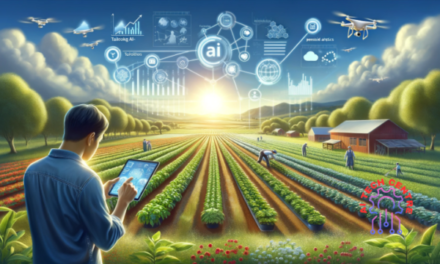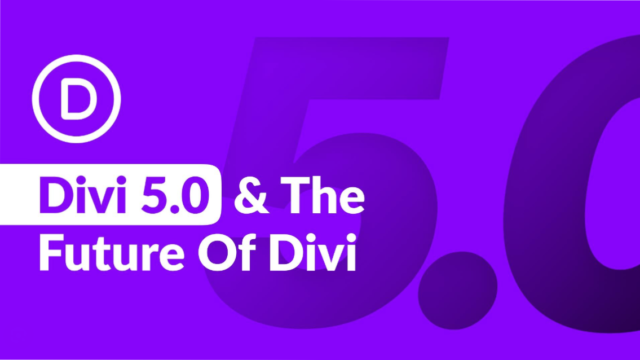Introduction
Keeping up with the latest breakthroughs in AI research is crucial for anyone interested in the field. AI is rapidly evolving, and new advancements are continuously being made. As a result, staying updated is essential to remain competitive and to push the boundaries of what is possible with AI technology. In this blog post, we will provide an overview of the latest breakthroughs in AI research and explain why it is important to stay updated in the field.
Overview of the Latest Breakthroughs in AI Research
AI research has seen significant advancements in various areas. One notable breakthrough is in natural language processing, where AI models have achieved impressive results in tasks such as language translation, sentiment analysis, and text generation. Researchers have also made great strides in computer vision, enabling AI systems to recognize and understand images and videos with incredible accuracy.
Another important area of AI research is reinforcement learning, which involves training AI models to make decisions and take actions based on feedback from the environment. Breakthroughs in reinforcement learning have led to AI systems that can play complex strategy games, control robots, and even solve challenging optimization problems.
Additionally, AI research has made significant progress in the field of healthcare, with AI models being developed to assist in medical diagnosis, drug discovery, and personalized treatment plans. These advancements have the potential to revolutionize the healthcare industry and improve patient outcomes.
Importance of Staying Updated in the Field
Staying updated with the latest breakthroughs in AI research is essential for several reasons. Firstly, it allows you to stay ahead of the curve and remain competitive in the fast-paced world of AI. By staying updated, you can leverage the latest techniques and tools to develop innovative AI solutions and gain a competitive edge in your field.
Secondly, staying updated helps you stay informed about the potential impact of AI on various industries. As AI continues to advance, it is important to understand how it can be applied in different domains to improve processes, increase efficiency, and drive innovation.
Lastly, staying updated in AI research allows you to contribute to the field and be part of the ongoing advancements. By keeping abreast of the latest breakthroughs, you can join the conversation, collaborate with other researchers, and contribute to the development of AI technologies that can shape the future.
In conclusion, staying updated with the latest breakthroughs in AI research is crucial for anyone interested in the field. The advancements in AI are shaping the way we live, work, and interact with technology. By staying updated, you can remain competitive, understand the potential impact of AI, and contribute to the ongoing advancements in the field. So, make sure to stay informed and embrace the exciting possibilities that AI research has to offer.
Natural Language Processing (NLP) Advancements
Advancements in NLP research
In recent years, there have been remarkable advancements in the field of Natural Language Processing (NLP). NLP is a branch of artificial intelligence that focuses on the interaction between humans and computers through natural language. These advancements have revolutionized the way we interact with technology and have opened up new possibilities for various industries.
One major breakthrough in NLP research is the development of sophisticated language models like GPT-3 (Generative Pre-trained Transformer 3). These models are trained on vast amounts of text data and can generate human-like responses to written prompts. This has significantly improved tasks such as language translation, sentiment analysis, and text generation. With these advancements, machines are able to understand and generate human language more accurately than ever before.
Another notable advancement in NLP is the improvement in chatbot technology. Chatbots are now capable of engaging in more natural and meaningful conversations with users. They can understand context and provide relevant responses, making them valuable tools for businesses in customer service and support.
Impact of these advancements on various industries
The advancements in NLP research have had a profound impact on numerous industries. In the healthcare sector, NLP models have been developed to analyze medical records, extract useful information, and assist in medical diagnosis. This has the potential to improve patient outcomes and streamline healthcare processes.
In the finance industry, NLP technology is being used to analyze financial documents and news articles to make better investment decisions. It can also be utilized to detect fraudulent activities and predict market trends.
NLP advancements are also influencing the customer service industry. Businesses can employ chatbots powered by NLP models to provide instant and personalized assistance to customers. This not only improves customer satisfaction but also reduces the workload on human support agents.
Moreover, NLP research is playing a crucial role in improving accessibility. Voice assistants, enabled by NLP technology, are assisting people with disabilities in performing various tasks and accessing information.
In conclusion, the recent advancements in NLP research have brought about significant improvements in language understanding and generation. These advancements have had a transformative impact across industries, from healthcare and finance to customer service and accessibility. As technology continues to evolve, we can anticipate even more exciting advancements in NLP that will shape the way we communicate with machines and enhance our overall digital experiences.
Computer Vision Breakthroughs
Breakthroughs in computer vision technology
In recent years, there have been remarkable breakthroughs in the field of computer vision, a branch of artificial intelligence that focuses on teaching computers to understand and interpret visual data. These advancements have revolutionized the way we interact with technology and opened up new possibilities for various industries.
One major breakthrough in computer vision research is the development of deep learning models, particularly Convolutional Neural Networks (CNNs). These models have shown incredible accuracy in image classification, object detection, and image segmentation tasks. With CNNs, computers can now analyze and interpret visual data with human-level precision, enabling applications such as self-driving cars, facial recognition systems, and medical imaging diagnostics.
Another significant advancement is the integration of computer vision with Augmented Reality (AR) and Virtual Reality (VR) technologies. By combining computer vision algorithms with AR and VR, immersive and interactive visual experiences can be created. This has potential applications in gaming, architecture, education, and even training simulations for various industries.
Applications and potential uses of computer vision
The applications of computer vision are vast and continue to expand. In healthcare, computer vision is being used for early disease detection, surgical assistance, and medical imaging analysis. In manufacturing, it can enhance quality control by detecting defects in products or monitoring production lines. In retail, computer vision enables smart shelves, cashierless stores, and personalized shopping experiences. In agriculture, it can help with crop monitoring, disease detection, and yield optimization.
Computer vision also plays a crucial role in security and surveillance systems, enabling real-time monitoring, facial recognition, and object tracking. In autonomous vehicles, computer vision powers advanced driver-assistance systems and self-driving capabilities. Moreover, computer vision is being utilized in entertainment and creative industries for virtual reality experiences, special effects, and video editing.
In conclusion, the breakthroughs in computer vision technology have tremendously advanced our ability to interpret and understand visual data. These advancements have resulted in a wide range of applications and potential uses across industries such as healthcare, manufacturing, retail, agriculture, security, and entertainment. As research continues and technology evolves, we can expect even more exciting developments in computer vision that will shape the way we perceive and interact with the visual world.
Reinforcement Learning Innovations
Recent innovations in reinforcement learning algorithms
In recent years, there have been significant advancements in the field of reinforcement learning, a branch of artificial intelligence that focuses on training algorithms to make decisions and take actions based on rewards and punishments. These innovations have revolutionized the way machines learn and interact with their environment, opening up new possibilities for various industries.
One major breakthrough in reinforcement learning is the development of deep reinforcement learning algorithms. These algorithms, combined with deep neural networks, have shown remarkable performance in learning complex tasks and achieving superhuman levels of mastery in games such as chess, Go, and Dota 2. With these algorithms, machines can learn to optimize their actions through trial and error, adapting and improving their strategies over time.
Another significant innovation is the use of transfer learning in reinforcement learning. Transfer learning allows algorithms to transfer knowledge and experiences gained from one task to another, reducing the need for extensive training on new tasks. This not only improves learning efficiency but also enables the application of reinforcement learning in real-world scenarios where data collection and training can be time-consuming and costly.
Potential applications in autonomous systems
The advancements in reinforcement learning have opened up exciting possibilities for various applications in autonomous systems. One potential application is autonomous vehicles, where reinforcement learning can be used to train algorithms to make complex driving decisions in real-time. These algorithms can adapt to changing road conditions, navigate through traffic, and make safe and efficient driving maneuvers.
Reinforcement learning also holds promise in robotics, where robots can learn to perform tasks such as object manipulation, assembly, and even delicate surgical procedures. By combining reinforcement learning with computer vision, robots can perceive and understand their environment, learn from interactions, and improve their performance over time.
Additionally, reinforcement learning has potential applications in personalized recommendation systems, finance, healthcare, and industrial automation. It can be used to optimize advertisement strategies, personalize medical treatments, and improve efficiency in manufacturing processes.
In conclusion, the recent innovations in reinforcement learning algorithms have paved the way for exciting advancements in autonomous systems across various industries. With deep reinforcement learning and transfer learning, machines can learn and adapt, achieving superhuman performance and opening up new possibilities for intelligent decision-making. As research and development continue, we can expect further breakthroughs in reinforcement learning that will shape the future of AI-powered autonomous systems.
Generative Adversarial Networks (GANs) Developments
Development and evolution of GANs
Generative Adversarial Networks (GANs) have witnessed significant developments and evolution in recent years. This innovative approach in the field of machine learning has revolutionized the way artificial intelligence generates new and realistic content. GANs consist of two neural networks – a generator and a discriminator – that work together to create and evaluate synthetic data.
The development of GANs started with research breakthroughs in 2014, and since then, numerous improvements have been made. Researchers have introduced different types of GAN architectures, such as conditional GANs, progressive GANs, and style-based GANs, each with its unique advantages in generating high-quality images, videos, and even audio.
One notable advancement in GANs is the application of transfer learning, allowing models to learn from one dataset and apply that knowledge to generate content in a different domain. This has enabled GANs to produce impressive results even with limited training data.
Implications of GANs on creative industries
The emergence of GANs has brought about exciting opportunities for the creative industries. Artists, designers, and content creators can now leverage GANs to automate and enhance their creative processes. GANs have been used for generating artwork, fashion designs, and even virtual characters for entertainment purposes.
The fashion industry, for instance, has started utilizing GANs to generate unique clothing designs and predict future fashion trends. This not only saves time and resources but also allows for innovation and personalized designs.
Furthermore, GANs have found applications in the gaming industry, enabling developers to generate lifelike environments, characters, and animations. This enhances the immersive experience for gamers and reduces the time and costs associated with manual design.
In conclusion, the continuous development and evolution of GANs have revolutionized the creative industries by providing innovative tools for content generation. As GANs continue to advance, we can expect even more impressive applications in fields such as art, design, entertainment, and beyond, shaping the future of creative expression.
Explainable AI (XAI) Progress
Advancements in explainable AI techniques
In recent years, there has been significant progress in the development of explainable AI (XAI) techniques, which aim to make artificial intelligence systems more transparent and understandable. XAI focuses on providing insights into how AI systems arrive at their decisions, enabling users to comprehend and trust the outcomes.
Researchers and experts in the field have been working on several approaches to enhance explainability in AI. This includes developing algorithms that can generate explanations for AI predictions, highlighting relevant features or data points that influenced the decision. Techniques like model-agnostic methods, attention mechanisms, and rule-based approaches have been explored to improve the interpretability of AI systems.
Importance of transparency in AI decision-making processes
Transparency in AI decision-making processes is crucial for various reasons. Firstly, it helps to improve user understanding and acceptance of AI systems, ensuring that they are not seen as black boxes making decisions without any reasoning. It also enables users to identify and correct biases or errors in the data or algorithm, promoting fairness and accountability.
Moreover, transparency plays a vital role in industries where regulatory compliance and ethical considerations are paramount. For instance, in healthcare, explainable AI can help doctors and medical practitioners understand and trust AI-assisted diagnoses or treatment recommendations.
Overall, advancements in explainable AI techniques and the importance of transparency in AI decision-making processes bring us closer to a future where AI systems are not only efficient but also accountable and understandable. This progress paves the way for building AI systems that can be trusted and widely adopted across various domains.
Robotics and AI Integration
Integration of AI in robotics
In recent years, we have witnessed a remarkable integration of artificial intelligence (AI) technologies in the field of robotics. This integration has revolutionized the capabilities of robots, allowing them to perform complex tasks and adapt to dynamic environments. By combining AI algorithms with robotic systems, machines can now perceive, learn, and make autonomous decisions.
One significant area of integration is the use of AI for perception in robotics. Traditional robots relied on pre-programmed instructions, but with AI, robots can now use sensors and cameras to accurately perceive their surroundings. This enables them to navigate through obstacles, recognize objects, and interact with the environment in a more human-like manner.
Advancements in robotics with AI capabilities
AI has also enhanced the learning capabilities of robots. Machine learning algorithms allow robots to acquire knowledge and improve their performance over time. They can learn from past experiences, adapt to new situations, and continuously refine their skills. This has implications for various industries, such as manufacturing, logistics, healthcare, and even space exploration.
Furthermore, AI enables robots to make autonomous decisions based on real-time data analysis. They can analyze complex patterns, identify anomalies, and respond accordingly. This has profound applications in areas like autonomous vehicles, where robots can navigate and make split-second decisions to ensure the safety of passengers and pedestrians.
The integration of AI in robotics has opened up a world of possibilities. With the continuous advancements in both AI and robotics, we can expect to see even more sophisticated and intelligent machines that can perform a wide range of tasks, making our lives easier and more efficient.
The Latest Breakthroughs in AI Research: A Recap
Artificial intelligence (AI) research has been progressing at a rapid pace, yielding remarkable breakthroughs that are reshaping various industries. In this blog, we will recap some of the latest advancements in AI and their potential implications for the future.
Emerging discussions on AI ethics and responsible AI practices
As AI continues to evolve, so does the discussion around its ethical considerations and responsible use. Experts and stakeholders are engaging in conversations about the potential risks of AI, such as bias in algorithms, privacy concerns, and job displacement. These discussions aim to establish frameworks and guidelines to ensure that AI systems are developed and used responsibly.
Considerations for developing ethical AI systems
Developing ethical AI systems involves careful consideration of various factors. One important aspect is transparency, ensuring that the decision-making process of AI algorithms is explainable and understandable. Fairness is another critical consideration, as AI systems should treat all individuals equally and avoid discrimination. Privacy and data protection must also be prioritized to prevent misuse or unauthorized access to sensitive information.
Other considerations include accountability, where developers and users of AI systems are responsible for their actions, and the need for ongoing evaluation and monitoring to address any unintended consequences or biases that may arise.
In conclusion, staying up-to-date with the latest breakthroughs and engaging in discussions on AI ethics and responsible AI practices are essential for ensuring the responsible development and deployment of AI systems in our increasingly automated world.
Conclusion
In conclusion, the latest breakthroughs in AI research have been driving remarkable advancements across various industries. The discussions on AI ethics and responsible AI practices have gained traction, emphasizing the need for transparency, fairness, privacy, accountability, and ongoing evaluation.
Summary of the latest breakthroughs in AI research
The recap of the latest advancements in AI research showcased the evolving landscape of artificial intelligence. These breakthroughs include advancements in natural language processing, computer vision, deep learning, reinforcement learning, and robotics. AI-powered tools and technologies are transforming industries such as healthcare, finance, manufacturing, and transportation. From autonomous vehicles to medical diagnostics, AI is revolutionizing how we work, live, and interact with technology.
Future prospects and implications of AI advancements
The future prospects of AI advancements are promising. With continued research and development, we can expect further improvements in AI algorithms, models, and applications. This will bring about greater automation, increased efficiency, and enhanced decision-making capabilities. However, it is also important to address potential challenges such as job displacement, ethical considerations, and the impact on societal norms.
As AI continues to shape our world, it is crucial to stay informed and engaged in discussions around AI ethics and responsible AI practices. This will ensure that AI systems are developed and deployed in a way that benefits society while minimizing potential risks and biases. By embracing the latest breakthroughs and fostering responsible AI practices, we can harness the true potential of AI for the betterment of humanity.










